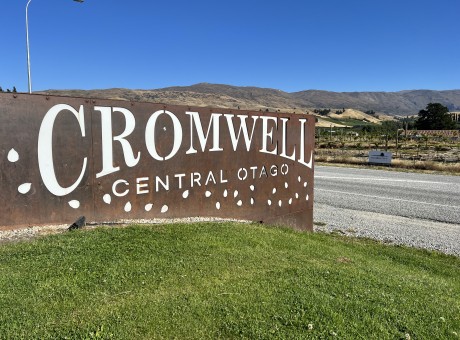ORC ramps up action to tackle Arrowtown air pollution

Air quality in Arrowtown has come under the spotlight as the regional council considers new reports that include data on how clean - or not - the air is in some known trouble spots.
One of the most polluted places in Otago is Arrowtown, which has the highest annual and winter average concentrations of PM2.5, tiny particles in the air that can cause health problems.
The particles are expelled from vehicles and wood burning, as well as other industry.
While the Otago Regional Council's latest Annual Air Quality Report shows air quality in Arrowtown last year had improved on six years ago, it still needs to go much further.
The report outlines monitoring efforts over the past year and compares data gathered against the current National Environmental Standards for Air Quality limit.
“One of the biggest improvements is the reducing number of air quality exceedances in Arrowtown over the past six years,’’ ORC air scientist Sarah Harrison says.
"These have continued to decrease with just 10 exceedances last year, compared to almost 30 recorded in 2018— although there is still plenty of room for improvement."
The National Environmental Standards for Air Quality allows for only one exceedance per year.
Moves to test for the smaller PM2.5 particles, which because of their size are more likely to enter people's respiratory systems, rather than just the larger PM10 particles, is noted in the report as an improvement in the region.
Last year’s winter data shows Otago exceeded acceptable levels of PM10 17 times.
In addition to Arrowtown air quality red flags have been raised for Cromwell, Alexandra, Clyde, and Milton, particularly during winter, with home heating being the key culprit.
In a statement, the council says new research is showing air pollution is more dangerous at lower concentrations than previously thought, and this supports the lowering of existing guidelines.
Councillors have also been presented with a report detailing a trial study by the council monitoring black carbon in Arrowtown between March and October last year.
Black carbon is both a climate change pollutant and a human health hazard, and monitoring of the ultra-fine flecks of it in the air is a first for the ORC.
The council had on loan a Magee Aethlometer AE33, a continuous monitoring instrument that uses optical technology to calculate the concentration of black carbon as the particles accumulate on a filter tape.
Data collected per the months last year show a strong seasonal pattern, with higher concentrations during winter, and between 8am and 9am, and 7pm and 9pm.
Ms Harrison says the source of the black carbon is home heating emissions.
It comes from incomplete combustion and measures just 10 to 30 nanometres, which is approximately 1,000 times smaller than PM10 particles.
While a nanometre is a billionth of a metre, PM10 and PM2.5 are closer to a millionth of a metre.
Because it is black, black carbon absorbs light and heat, contributing to warming the atmosphere.
Although it is a short-lived pollutant, spending about one week in the atmosphere, it can impact cloud formation and increases ice and snow melt when it settles on these surfaces.
Heading into winter, the council is promoting its annual 'Burn Dry, Breathe Easy' education campaign.
Ms Harrison says woodsmoke pollution can be reduced when residents burn only dry wood and keep their fire hot and not smouldering, and they don't burn rubbish in fireplaces.
She notes moves towards thermally efficient homes with good insulation are also part of the bigger picture.
The full Annual Air Quality Report 2023 is available for viewing online, as is the black carbon monitoring report.
The council says PM2.5 data will be available to the public later in the year via its environmental data portal as well as the LAWA (Land Air Water Aotearoa) website.
Main image (File photo/NIWA): Arrowtown cloaked in smog.


























